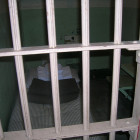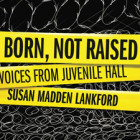
Department of Labor Helps At-Risk Youth ‘STRIVE for the Future’
|
STRIVE, a New York City-based organization with 21 affiliates throughout the United States, was recently awarded a three-year, $5 million grant from the United States Department of Labor for a new, nationwide initiative called STRIVE for the Future. The program is centered on providing services and assistance to formerly incarcerated youth, with the grant expected to benefit about 400 teens. A recent press release from the organization said the initiative will focus on juveniles ages 14 and older who primarily come from high-poverty and high-crime communities and were involved in the juvenile justice system, but not the adult criminal system, within the last 12 months. The organization says it will provide numerous tools and services such as career development assistance and various forms of training and education for at-risk youth. Additionally, STRIVE plans on developing several community service projects, as well as mentoring and violence reduction programs, as part of the STRIVE for the Future initiative, with all 21 affiliates having the opportunity to apply for local community services.








